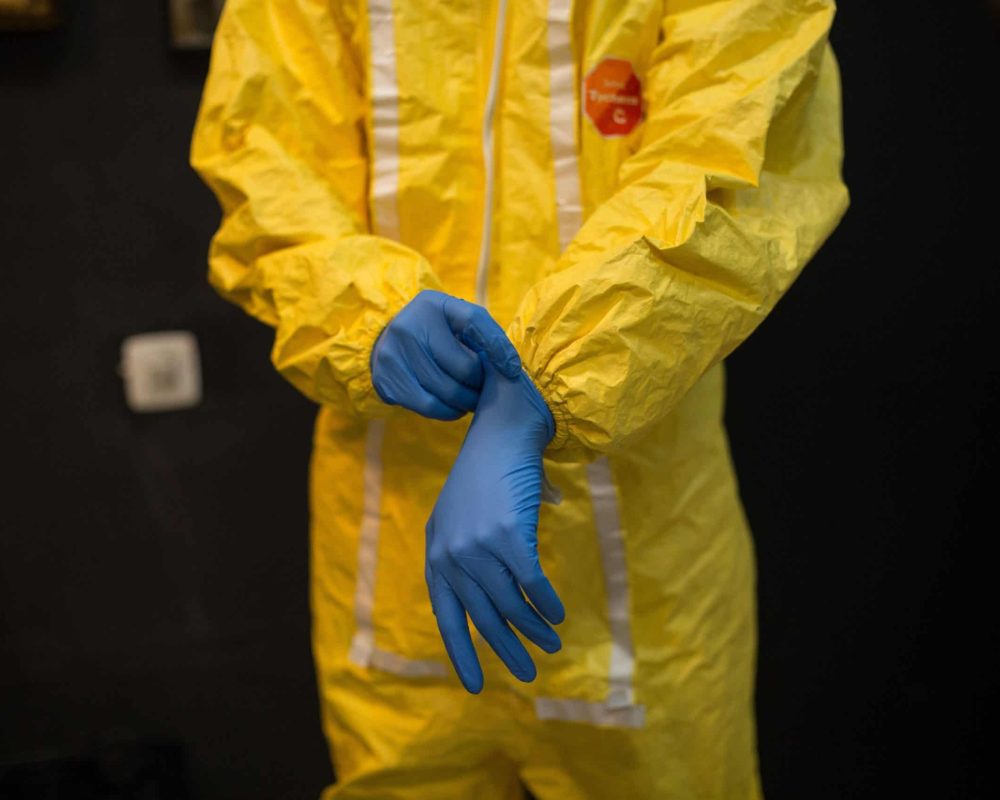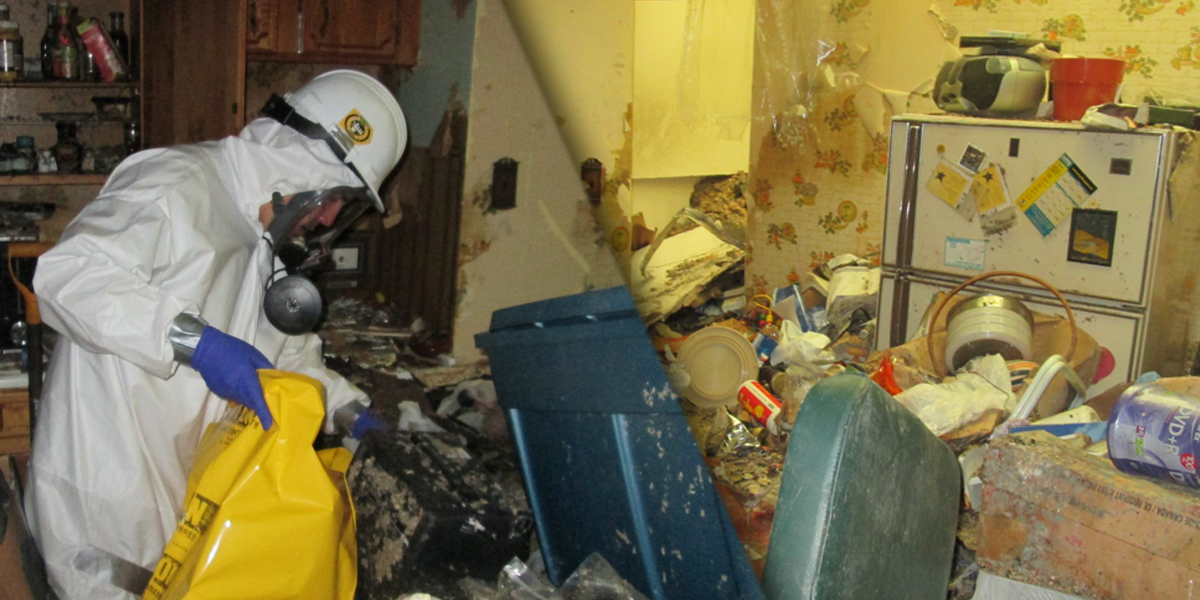Hoarder Cleanup Solutions: Restoring Order and Safety in Your Home
Hoarder Cleanup Solutions: Restoring Order and Safety in Your Home
Blog Article
Specialist Biohazard Cleaning and Purification for Blood, Bodily Fluids, and Hazardous Materials
In the world of biohazard cleaning and purification for blood, bodily fluids, and unsafe products, precision and know-how are vital. The prospective health threats related to direct exposure to biohazards emphasize the vital need for meticulous handling and thorough cleaning. Specialized training furnishes professionals with the knowledge and abilities needed to attend to these dangerous circumstances efficiently. Nevertheless, it is not merely concerning tidying up; the importance of using correct decontamination strategies can not be overstated. As we browse the complex landscape of biohazard cleanup, recognizing the nuances of policies, compliance, and the specialized tools at play ends up being crucial in guaranteeing a secure and extensive decontamination procedure.
Wellness Threats of Biohazard Exposure
Direct exposure to biohazards positions significant health and wellness risks that can lead to extreme effects for communities and individuals alike. Biohazards encompass a variety of biological substances, consisting of blood, physical fluids, mold, microorganisms, infections, and various other possibly infectious materials. When people enter contact with these biohazards, whether with mishaps, incorrect handling, or environmental exposure, they face the risk of contracting severe illnesses or diseases.
Among the key wellness threats linked with biohazard direct exposure is the transmission of contagious illness. Bloodborne microorganisms such as HIV, hepatitis B and C, and numerous germs can be present in biohazardous products, posing a straight hazard to human wellness. Inhaling airborne biohazards like mold spores or coming right into call with polluted surfaces can also bring about breathing problems, allergies, and various other negative wellness impacts.
Moreover, biohazard exposure can have lasting wellness ramifications, with some diseases showing up years after the preliminary contact (Blood Cleanup). Therefore, it is essential to prioritize correct biohazard cleansing and decontamination to minimize these health and wellness risks and make certain the security of individuals and areas

Specialized Educating for Biohazard Cleanup
When it concerns taking care of biohazard cleanup efficiently and securely, specialized training plays a basic duty in making certain proper purification procedures are complied with. Biohazard cleanup requires details expertise and skills to efficiently minimize threats related to bloodborne microorganisms, bodily liquids, and harmful products. Specialists trained in biohazard cleanup undergo extensive direction on exactly how to securely take care of, remove, and take care of biohazardous materials to stop contamination and exposure.
Specialized training for biohazard cleaning covers a variety of important topics, including proper personal protective equipment (PPE) usage, bloodborne pathogen understanding, decontamination methods, and contaminated materials disposal methods. People educated in biohazard clean-up are equipped with the necessary experience to analyze contamination degrees, recognize possible threats, and apply proper clean-up treatments in conformity with regulative standards.
Continuous training and education and learning are extremely important in the area of biohazard cleaning to remain upgraded on the most current decontamination technologies, safety and security procedures, and regulations. By purchasing specialized training, biohazard cleanup specialists can efficiently reply to emergency clean-up circumstances and safeguard both public wellness and the atmosphere.
Relevance of Appropriate Purification Techniques
Using correct purification techniques is essential in biohazard cleaning to successfully decrease and get rid of hazardous products health and wellness risks. Reliable decontamination not just guarantees the elimination of visible traces of blood, physical fluids, and other biohazards yet likewise targets unnoticeable virus that may present serious wellness threats if not properly removed. By adhering to strict purification procedures, trained experts can considerably lower the risk of exposure to hazardous microbes, viruses, and germs that can lead to infections or illness.
Proper decontamination methods entail using specific devices and anti-bacterials that are specifically developed to counteract biohazards effectively. Detailed cleaning and sanitation of discover this info here infected areas are site link vital to protect against the spread of virus and ensure a risk-free atmosphere for passengers. Additionally, the appropriate disposal of biohazardous waste following decontamination treatments is essential in preventing contamination of other surfaces or individuals.

Equipment and Tools for Safe Cleaning
When dealing with blood, physical fluids, or harmful materials, biohazard cleaning specialists depend on specialized equipment to reduce direct exposure risks and thoroughly sanitize the afflicted area. Furthermore, biohazard cleansing kits containing anti-bacterials, absorbent products, and biohazard bags are made use of to securely contain and dispose of polluted things.
Advanced cleansing tools like hospital-grade disinfectants, HEPA-filtered vacuum cleaners, and misting machines are employed to sterilize surface areas and get rid of biohazards efficiently. Specialized devices such as sharps containers and biohazard garbage disposal containers are utilized to safely manage sharp items and biohazardous waste products. By making use of the right devices and devices, biohazard cleansing specialists can ensure a comprehensive clean-up process that focuses on safety and security and minimizes health risks for both workers and residents of the afflicted area.
Laws and Compliance in Biohazard Cleaning
Appropriate adherence to policies and conformity criteria is critical in biohazard cleaning to guarantee the security of both workers and the atmosphere. Government companies such as OSHA (Occupational Security and Health And Wellness Administration) and the EPA (Epa) have established particular guidelines for biohazard cleanup procedures to minimize health threats and ecological contamination. These laws cover a series of elements including the handling, transportation, and disposal of biohazardous products, in addition to the needed training and protective devices required for employees associated with the clean-up process.
Biohazard cleansing business should stay current with these policies to guarantee that their procedures satisfy the needed security standards. Failing to conform with these regulations can cause serious consequences, consisting of fines, legal activity, and endangering the wellness of people and the environment. By adhering to stringent laws and compliance measures, biohazard cleaning business can properly alleviate threats and make certain a risk-free and detailed cleanup process for all events entailed.
Final Thought
In final thought, biohazard cleaning and decontamination call for specialized why not find out more training, appropriate strategies, and adherence to policies. Direct exposure to blood, physical liquids, and hazardous materials postures significant wellness risks, making it important to use the appropriate equipment and tools for safe cleanup. By following stringent protocols and standards, professionals can efficiently minimize the risks linked with biohazard direct exposure and make certain the safety of both themselves and others.
As we navigate the detailed landscape of biohazard cleaning, recognizing the nuances of regulations, compliance, and the customized equipment at play ends up being crucial in ensuring a safe and extensive purification process. (Blood Cleanup)
When it comes to dealing with biohazard cleanup effectively and safely, specialized training plays a fundamental function in making certain correct decontamination procedures are complied with.Utilizing proper decontamination techniques is important in biohazard clean-up to successfully remove dangerous materials and minimize wellness risks. In addition, biohazard cleansing sets consisting of disinfectants, absorbing products, and biohazard bags are made use of to safely include and dispose of polluted items.
Federal government firms such as OSHA (Occupational Security and Health And Wellness Administration) and the EPA (Environmental Security Company) have developed certain guidelines for biohazard cleaning treatments to reduce health threats and environmental contamination.
Report this page